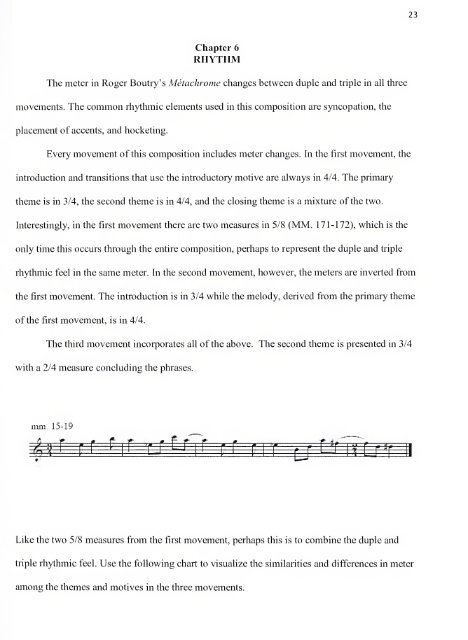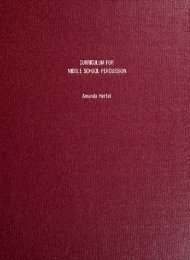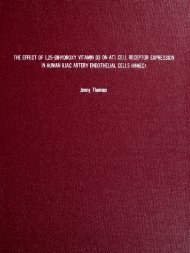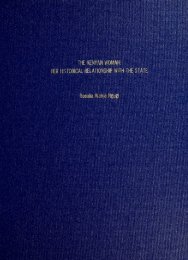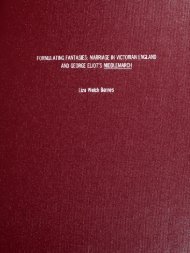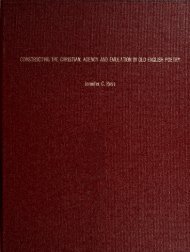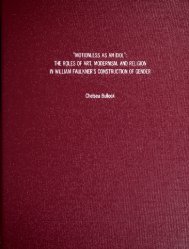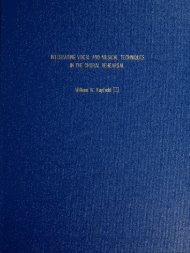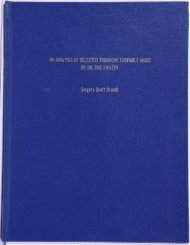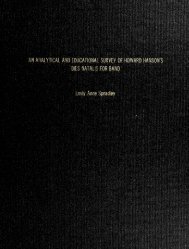An Analytical and Educational Survey of Roger Boutry's Mtachrome
An Analytical and Educational Survey of Roger Boutry's Mtachrome
An Analytical and Educational Survey of Roger Boutry's Mtachrome
Create successful ePaper yourself
Turn your PDF publications into a flip-book with our unique Google optimized e-Paper software.
Chapter 6RHYTHMThe meter in <strong>Roger</strong> <strong>Boutry's</strong> Metachrome changes between duple <strong>and</strong> triple in all threemovements. The common rhythmic elements used in this composition are syncopation, theplacement <strong>of</strong> accents, <strong>and</strong> hocketing.Every movement <strong>of</strong> this composition includes meter changes. In the first movement, theintroduction <strong>and</strong> transitions that use the introductory motive are always in 4/4. The primarytheme is in 3/4, the second theme is in 4/4, <strong>and</strong> the closing theme is a mixture <strong>of</strong> the two.Interestingly, in the first movement there are two measures in 5/8 (MM. 171-172), which is theonly time this occurs through the entire composition, perhaps to represent the duple <strong>and</strong> triplerhythmic feel in the same meter. In the second movement, however, the meters are inverted fromthe first movement. The introduction is in 3/4 while the melody, derived from the primary theme<strong>of</strong> the first movement, is in 4/4.The third movement incorporates all <strong>of</strong> the above. The second theme is presented in 3/4with a 2/4 measure concluding the phrases.Like the two 5/8 measures from the first movement, perhaps this is to combine the duple <strong>and</strong>triple rhythmic feel. Use the following chart to visualize the similarities <strong>and</strong> differences in meteramong the themes <strong>and</strong> motives in the three movements.


